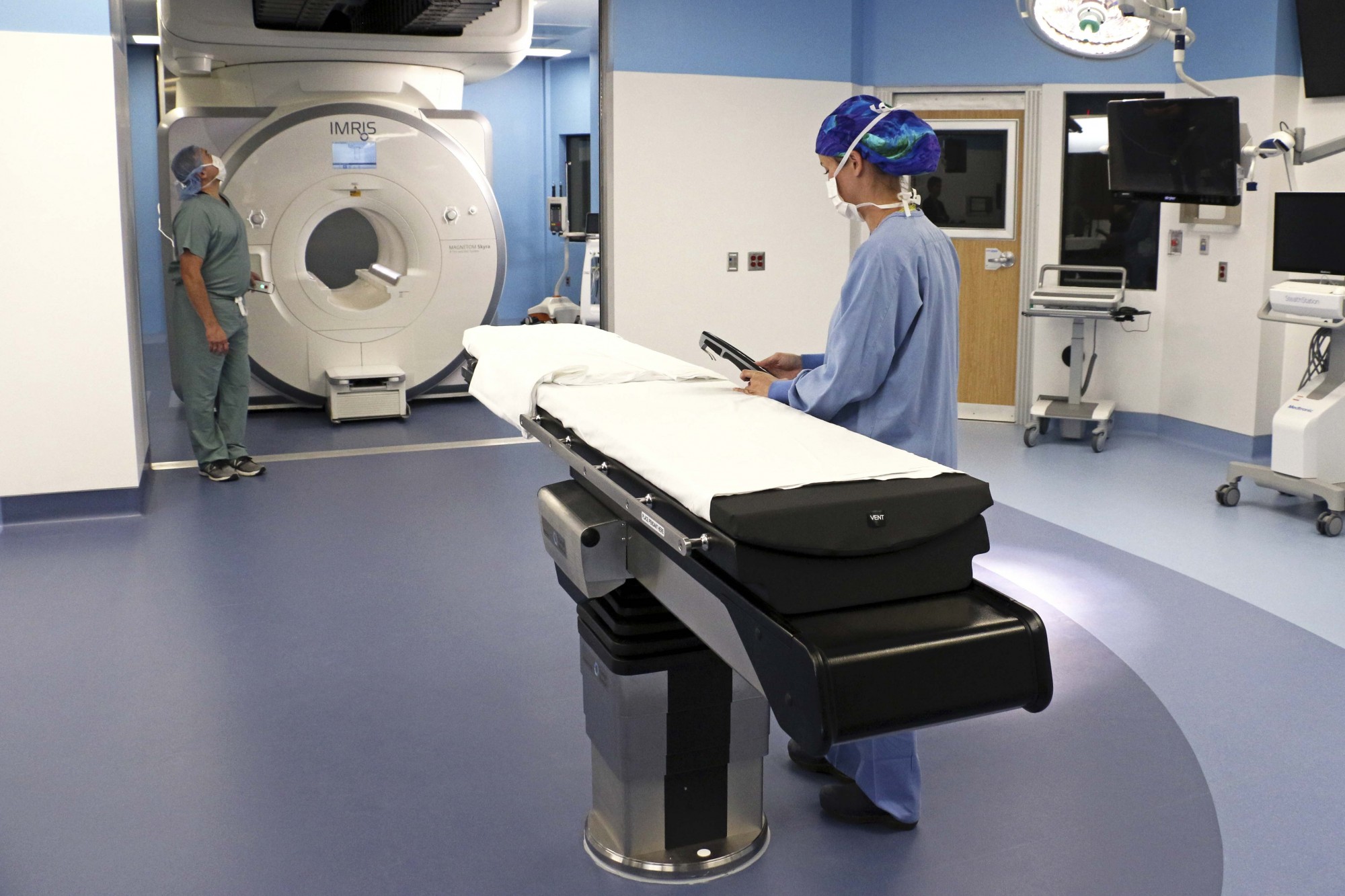A new medical suite at the M Health Fairview Medical Center at the University of Minnesota features an MRI machine capable of improving patient outcomes and surgery success rates.
The clinic officially utilized the new surgical suite in patient surgeries for the first time last month. The suite features three operating rooms and a fully movable MRI machine organized in a T-like shape, allowing doctors and medical staff to see the results of their surgeries in real time.
“The ability to check our work in real time gives us the ability to perform procedures we couldn’t otherwise perform. We are going to be able to help our patients in ways we previously weren’t. But we’re also going to be able to develop surgeries that we have not even [begun] to imagine,” said neurosurgery department head Clark Chen.
The installation of the suite and corresponding MRI machine are a part of larger renovations at the M Health Fairview Medical Center. The construction officially broke ground more than a year ago, and the suite is now fully operational for patient surgeries, according to M Health spokesperson Krystle Barbour.
After a round of clinical surgery tests, the suite was used in a brain tumor removal surgery for the first time last month. However, the unique design of the suite makes it a suitable environment for a variety of medical surgeries, explained Chen.
“Typically, there’s a big distance between the MRI and the procedure room and travel between the two points is time lost,” Chen said. “[The suite] could be used for vascular surgery and it has potential for trauma surgery. We started off with tumors, but the reality is this theater will impact every aspect of neurosurgery to the benefit of our patients.”
The development and design of the suite required a mix of experts with knowledge in both neurosurgery and radiology to build on previous research performed at the University, said M Health Fairview Radiologist and Department of Radiology Chair Charles Dietz.
Doctors involved in the suite’s creation used existing equipment within the radiology and neurosurgery departments as a basis for developing the technology, Dietz said.
For developers like Chen and Dietz, the new combination of technology presented its own set of challenges, requiring hospital staff, resident doctors and leading researchers to be specially trained to operate the medical equipment.
“The MRI is a very powerful tool, but it’s also it presents challenges in terms of making sure that there’s no paramagnetic or metallic equipment in the area where MRI comes in. The holder that we use to hold the patient’s head steady has to fit the specific requirement of MRI and if you position it at the wrong distance, then it creates a lot of hazards,” Chen said.
As a part of the M Health system, the suite will also be available to medical students and professionals outside of the University.
“We have researchers who are eager to get actively involved. Dr. Chen and I are co-recruiting a Ph.D. [researcher] in order to help and to do things that other people aren’t doing across the country,” Dietz said.







